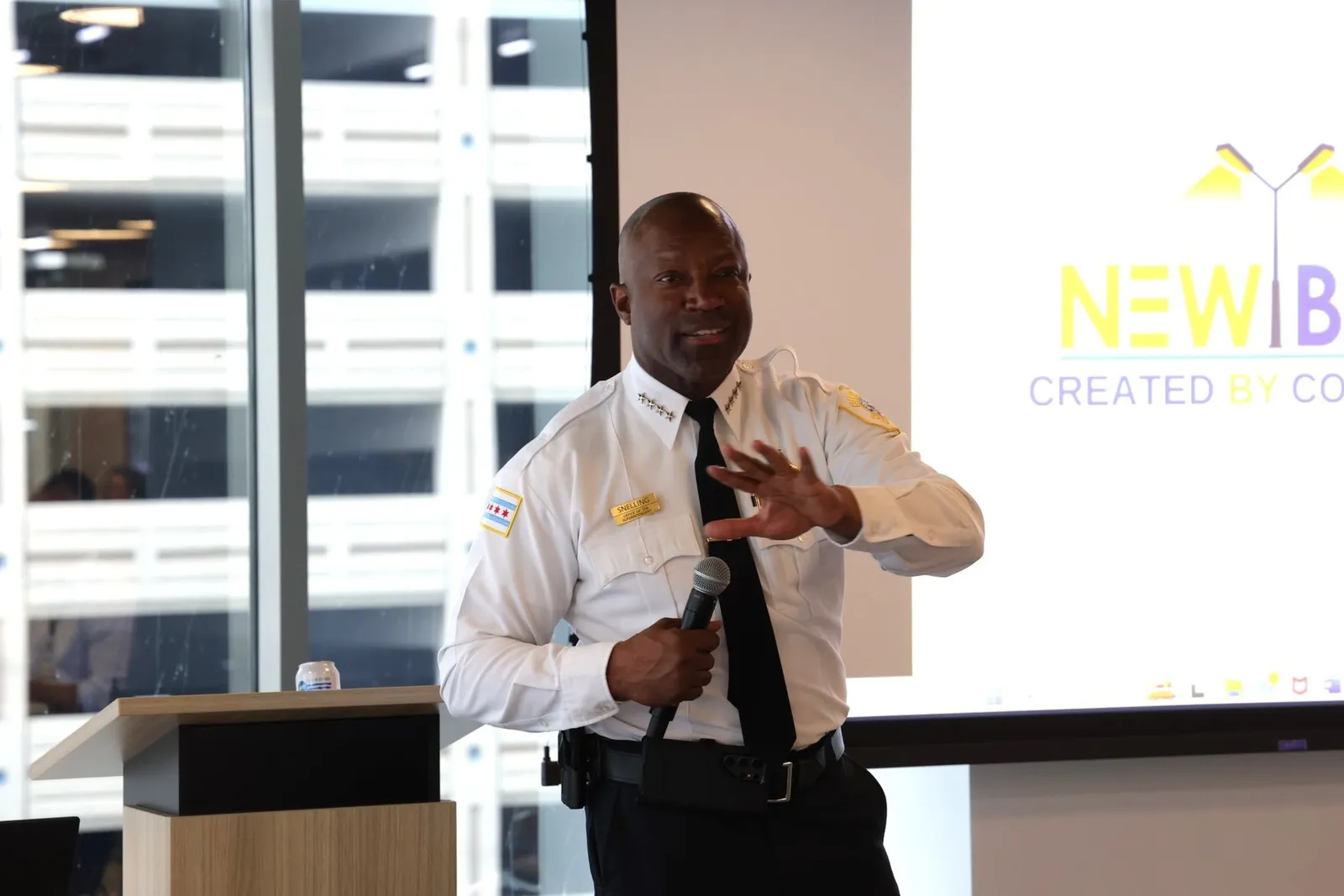Repairing fractured relationships between police and the communities they serve is a longstanding issue often fraught with skepticism and mistrust – exacerbated in recent years by high-profile deaths of civilians at the hands of law enforcement.
But New Blue – a collaborative created by police and community designed to foster collective change – is reshaping the narrative. Founded in 2020 by one current police officer – Brittany Nestor – and one former police officer/current head of early talent at Teach For America, Andy Saunders, in response to the murder of George Floyd and the nationwide protests that followed, New Blue serves as a national justice reform incubator that can transform local police agencies and bridge the divide with the communities they serve through policy and practice.

“We know that our common goals of improving public safety, increasing community engagement and building a more equitable system are essential in earning back that trust and creating a shared vision for public safety,” said New Blue Executive Director Kristin Daley.
Commitment to substantive and systemic change drives the organization’s Fellowship, a cohort of forward-thinking officers who work together with their communities to develop long-term, implementable policy solutions tailored to the community’s needs. The 2024 cohort recently held a two-day convening in Chicago. Thirty officers from across the nation, including the Chicago Police Department, participated.
“It’s refreshing to see people from law enforcement who are just dedicated to rebuilding these relationships, keeping communities safe and just protecting the people who deserve protection,” said Chicago Police Superintendent Larry Snelling at the recent gathering. “It’s going to help us achieve our goal of public safety.”
Since its founding in 2020, New Blue has worked with officers from more than 20 agencies across the nation, including Chicago and Evanston, IL, Boston, Denver and Los Angeles, to implement solutions to the most pressing challenges in policing, aligned with the following pillars:
- Restorative Justice & Diversion
- Alternative Response and Community Violence Interruption
- Community Engagement
- Recidivism Reduction
- Recruitment and Retention Innovation that Reflects Community Diversity and Supports Police Culture Change
The Fellowship program works on three specific issues: identifying problems in police procedures or practice that harm communities; working with community members toward collaborative, systemic solutions; and implementing impact measurement on new or retooled policies and procedures.
For example, New Blue Fellows made presentations to the Evanston City Council highlighting ideas crafted by officers from the Evanston Police Department. Fellows have also built relationships with community organizations such as the Moran Center for Youth Advocacy, representing efforts to foster better engagement between police and the communities they serve.
New Blue stakeholders agreed that what makes the program unique and subsequently effective, is the collaboration between law enforcement and community members and organizations. Recognizing that these entities aren’t as divided as originally believed was eye-opening, said Chicago Police Lt. Jermaine Harris, a New Blue instructor.
“True collaboration comes through differences…When we have a conversation and I realize what their intentions are and their goals – to create safe communities, to create equity, to advance justice – I’m absolutely in line with that as a police officer, so we’re allies in this battle and that only comes because we sat together and had a conversation,” Harris said.
New Blue advocates said their experience is that regardless of race, class or socioeconomic status, all people want safe and just communities.
“What’s needed now is not a check-box approach, but a systemic overhaul; one that emphasizes public service and prioritizes community well-being,” Daley said. “Not an us vs them mentality but one in which all community stakeholders, including police, collaborate and share accountability.”
Through its Gun Violence Prevention and Justice Reform Program, The Joyce Foundation is a funder of New Blue.
About The Joyce Foundation
Joyce is a nonpartisan, private foundation that invests in evidence-informed public policies and strategies to advance racial equity and economic mobility for the next generation in the Great Lakes region.
